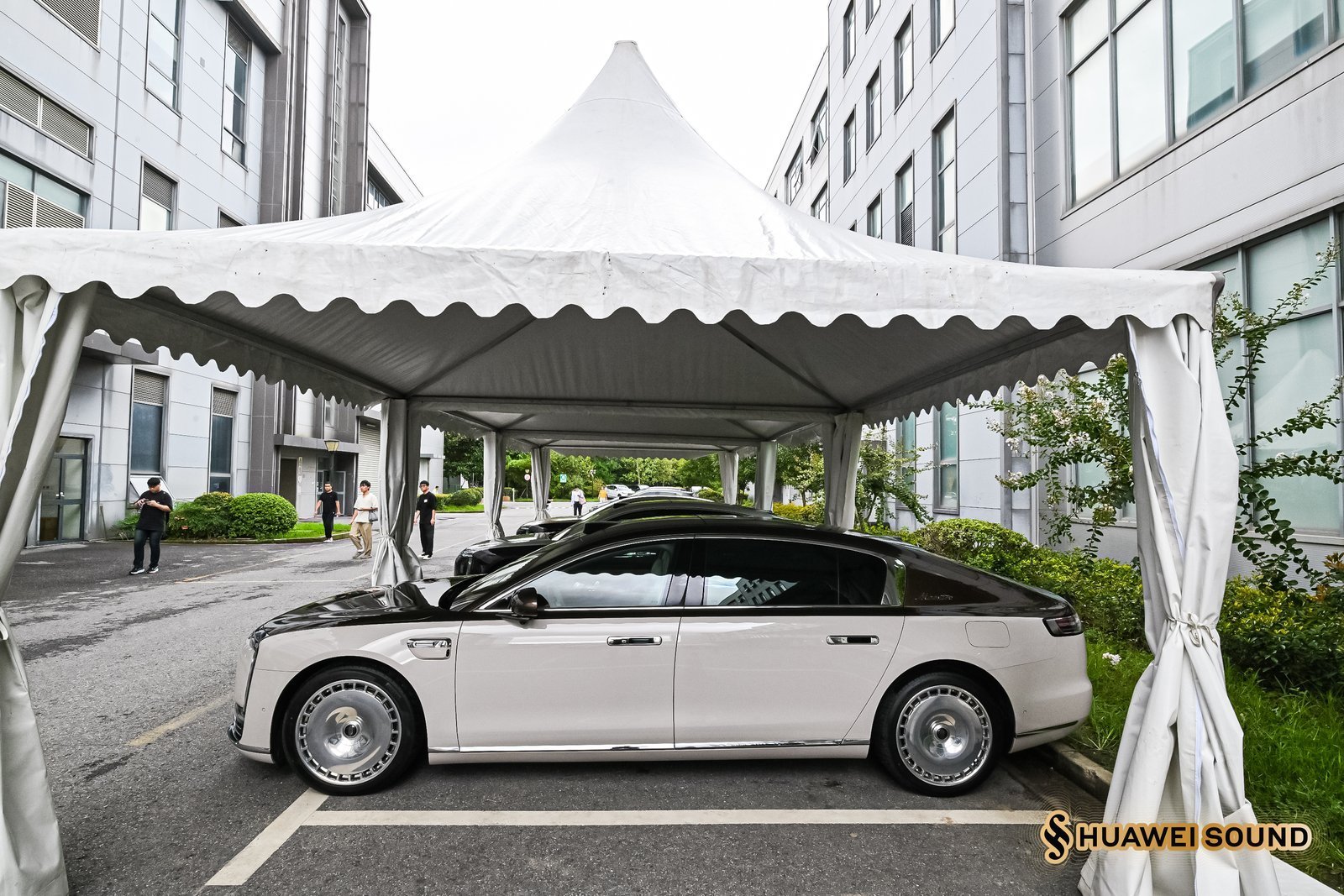Huawei’s Shanghai Acoustics R&D Center is the center for acoustic engineering perfection and demonstrations of how cloud computing automotive applications can transform vehicle technology development.
For 43-products Huawei Sound Ultimate Series is a computational infrastructure that processes massive acoustic data sets, triggers simulations, and allows sound processing in real time that would be impossible ten years ago.
Three test environments-anchoic chamber 4,8x4x4 meters (acoustically “dead” room), semi-tiechoic room 14x12x5 meters and listening room with 9,1,6-configuration-create huge volumes of measurement. Each acoustic test creates frequency response curves, phase relationships and distortion from multiple positions and over frequencies.
Management, analysis and use of this data requires significant computing resources, a place where the role of cloud computing is manifested in the development of the automotive industry.
Computing requirements of modern sound tuning
Lars Goller, the main advisor to Automotive and Acoustics Huawei, is led by a team that develops what the company calls the “tuning method”. His background includes gamut audio, Bang & Olufsen and Harman International. During the presentation in the Goller listening room, he explained that the achievement of faithful sound reproduction in vehicles requires mixing scientific measurement with artistic tuning and specialized hardware.
The development process begins with sound measurement, including response curves, phase data, timing accuracy and distortion analysis. This determines the parameters of performance and subsequent listening sessions use psychoacoustic principles (as the brain interprets the sound) to improve tuning specific to the cabin: inherent structural asymmetry, close reflections and frequency burden on bass.
What does this computing intensive is a scale. The Huawei Sound Ultimate series must be responsible for different seating positions, different cab loads (empty versus occupied), temperature fluctuations that affect material properties and real -time modifications based on vehicle velocities and road conditions.
Cloud Computing’s infrastructure processes these variables and triggers simulations that would otherwise amaze local processing.

Independent sound zones and computer technology
The most computing feature is the independent sound zone technology. Each headrest contains four drivers: two tweeters and two medium units. Combined with the Huawei audio field algorithms, the main field works as an active shock absorber that prevents the sound from ranks between the seats of the seats.
Huawei declares an insulation of 30 dB between lines and 99% of the energy department. During demonstrations, leading passengers heard classical music, while the rear passengers watched the action content with minimal crossings.
This requires the calculation of wave interference and instantaneous DSP modifications (digital signal processing)-an initial load divided between the edges in the vehicle and the optimization algorithms based on the cloud.
The removal of the noise road adds another layer of acoustic complexity that is experienced in the vehicle cabin. Huawei describes the “omnididimensional model” -multicannel amplification with minimal latency and applies the abolition of the ear adapting ears. Multilayer acoustic glass and absorption materials provide passive insulation towards the basic noise “at the library level”.
However, the active system requires continuous sensor data processing, analysis of road surface conditions, tire noise patterns and wind interference – computational tasks facilitated by cloud.
Investment in computational infrastructure
Huawei showed CNY 179.7 billion (approximately 20 billion GBP / 23.4 billion euros) for research and development expenditure for 2024, which represents 20.8% of total income, with more 3,000 research and development employees. Approximately 60 billion CNY (about 6.6 billion GBP / 7.8 billion euros) focuses on basic scientific research.
The numbers context Huawei’s cloud computing automobile ambitions. The company supplies solutions to more than twenty car manufacturers covering the assistance of the driver, cockpit and control systems and acoustics. As a supplier, the components provide Huawei a technological platform, while automakers determine market availability and regional deployment.
Market and technical considerations
European brands dominate automotive sound engineering historically. However, the Huawei approach challenges this dominance through a computing advantage, plus a purpose -built facility, an expertise received from established sound companies and substantial capital investments.
The technical ability is obvious. The practical question concerns scalability: whether this sophistication is reflected in multiple vehicle platforms at commercially viable prices and whether the automobile infrastructure of cloud computing can support these systems in volume scale.
Computing requirements exceed the initial tuning. The connected vehicles can receive ongoing updates, optimizing acoustic profiles based on the formulas of use and integration with developing content ecosystems – all depending on the robust cloud infrastructure for data processing and software distribution.
Assessment
The Huawei program shows the methodological strictness to create a consistent, top sound, all adapted for use in cloud computing.
Commercial success depends on the factors beyond the acoustic performance: the scalability of production, the integration of the supplier chain with various car manufacturers, the reliability of cloud infrastructure and the willingness of the consumer to pay premium prices for advanced sound and computing functions.
(Photo: Huawei sound)


Want to learn more about cloud computing from industry leaders? Check out Cyber Security & Cloud Expo in Amsterdam, California and London. The complex event is part of TechEx and together with other leading technological events. Click here for more information.
Techforge Media is powered by News. Explore other upcoming business technology and webinars here.
(Tagstotranslate) acoustics

